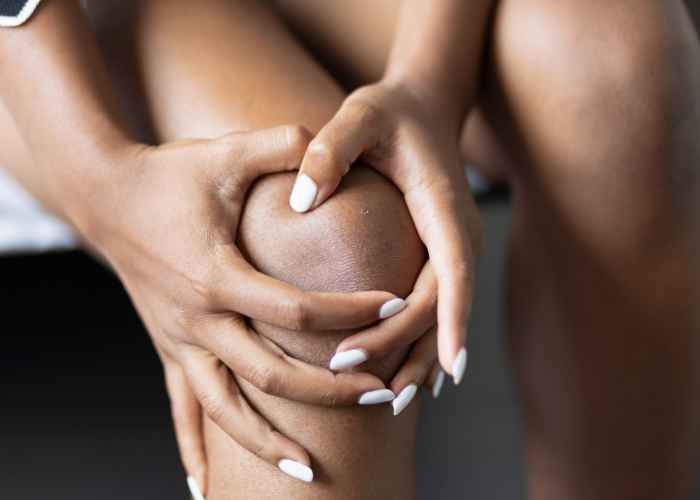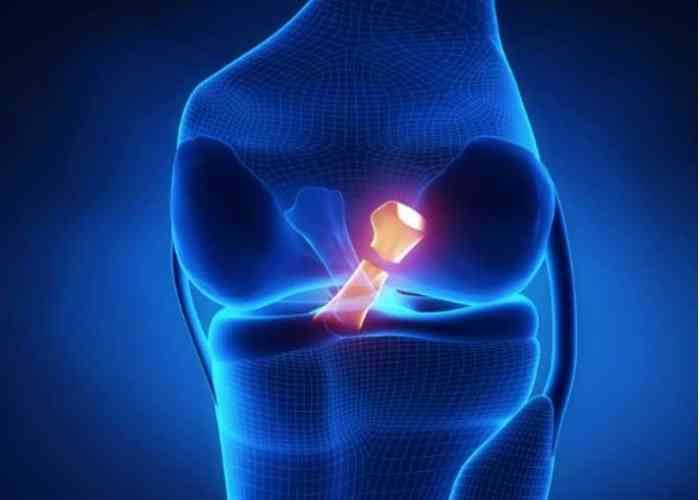What happened to JuJu Watkins during March Madness?
JuJu Watkins is known for her outstanding basketball talent and helping lead her USC Trojans to the “Elite Eight” in the NCAA tournament (we all call it March Madness). Less than six minutes into the game against Mississippi State, JuJu Watkins tore her ACL (Anterior Cruciate Ligament) in her knee. She was on a “fast break” – where the team quickly transitions from defense to offense to move the up the court – when her knee buckled beneath her, just before reaching the basket.

How did JuJu Watkins tear her ACL?
Unfortunately, a torn ACL on the basketball court is a pretty common injury. For JuJu, it happened while running to the other end of the court without contacting another player. Non-contact injuries are the most common cause of ACL tears. She planted her leg while moving forward, cut to avoid an opponent, and the knee gave way. Unfortunately, she immediately went down in pain, holding her knee.
What is a torn ACL knee injury that JuJu Watkins experienced?
The knee has 4 stabilizing ligaments: ACL, MCL, PCL and the LCL. The ACL, or anterior cruciate ligament, connects the thigh bone (femur) to the shin bone (tibia.) The job of the ACL is to help stabilize the knee, especially during activities that involve cutting, pivoting, and sudden stops. Athletes experience ACL tears more frequently than other individuals, due to the stress their sport puts on the ligaments of the knee.
Female athletes are also, unfortunately, two to five times more likely than male athletes to suffer an ACL injury. Research shows this may be because of anatomic and hormonal differences.

How does Dr. Ramkumar treat high level athletes like JuJu Watkins with a torn ACL?
The gold standard in managing ACL injuries is ACL reconstruction. Reconstruction involves removing the torn ACL and replacing it with a graft in the location of the prior ACL. If the graft is taken from the patient’s own body (autograft), it takes at least 9 months for the human body to recognize this and transform it into its new ACL. If the graft is taken from a cadaver, there will only be mechanical support but little to no expected biological transformation as the body is unlikely to ever recognize the donor tissue as its own.
Recently, some are managing ACL tears by sewing the shredded ends back together (ACL Repair) with or without scaffold support (BEAR implant). The interest in ACL “repair” has recently resurged, but history demonstrated an unacceptably high failure rate. Moreover, modern techniques at repair have not proven to be nearly as acceptable as the best ACL reconstruction with patellar tendon autograft. Thus, there is insufficient data to demonstrate ACL repair is at least as predictable or as safe as an operation as ACL reconstruction.
For this reason, high level athletes (like JuJu Watkins) are treated with ACL reconstruction using autograft, specifically from the patellar tendon with bone blocks (known as BTB: bone-patellar tendon-bone). Depending on the sport, the standing x-rays, and the patient’s preferences, Dr. Ramkumar also will discuss an adjunctive procedure, known as the lateral extra-articular tenodesis, to further decrease failure rate.
What is ACL reconstruction surgery?
ACL reconstruction surgery usually is performed arthroscopically. During this minimally invasive surgery, Dr. Ramkumar removes the damaged fragments of the torn ACL and replace them with a soft tissue called a graft. Two types of grafts that might be used for JuJu’s reconstruction are:
- Autograft: A tendon taken from the patient’s patellar tendon, hamstring tendon, or quadriceps tendon
- Allograft: Tissue from a donor, tissue bank, or cadaver. I rarely use an allograft for high-level athletes or any patient under the age of 40 years due to its failure rate.
Dr. Ramkumar performs the ACL reconstruction to restore stability to the knee, preserve the meniscus and articular cartilage, and help patients fully return to their activities and/or sport. It is very rare that Dr. Ramkumar will perform allograft ACL reconstruction.
Is JuJu Watkins’ Basketball Career Over?
Far from it! Paige Bueckers and Cameron Brink recovered well from their ACL injuries, so there is no reason to expect JuJu Watkins would be any different. JuJu Watkins is a young, healthy athlete and should be able to recover fully from her ACL Injury and reconstruction. However, it will take some time for the ACL to heal because the body requires needs to cellularly transform the BTB autograft into its new ACL; moreoever, regaining strength in the surrounding muscles after a major injury and major surgery takes time.
What is the timeline for JuJu Watkins Return to Basketball and/or recovery?
Most ACL reconstructions require a minimum of 9 months before returning to high end cutting sports. Often times, athletes do not start playing like themselves until 18-24 months after injury. In Dr. Ramkumar’s practice, patients with ACL reconstruction begin physical therapy about two weeks after surgery. A knee brace and crutches are used for the first 2-4 weeks to maintain range of motion, protect the menisci and ligament, and enable safe weight bearing. The first three months of her recovery will focus on rehabilitation with appropriate strength training. By the nine-month mark, we should see Watkins steadily working herself back to basketball.

